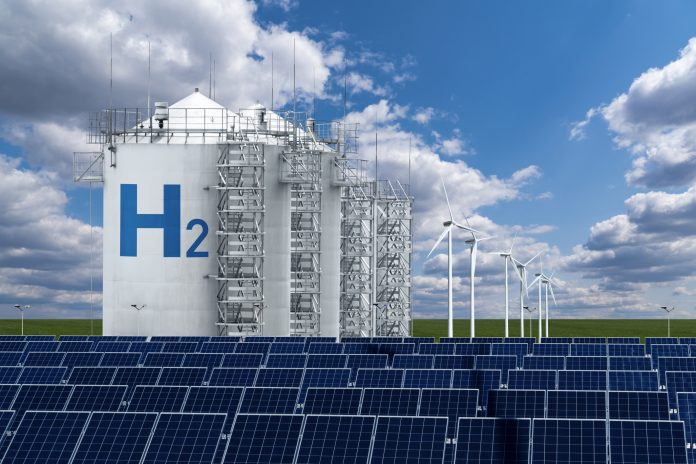Catalytic low-temperature methane decomposition for hydrogen generation
Adélio Mendes, Full Professor at the University of Porto and coordinator of the 112CO2 project, describes the concept of low-temperature catalytic methane decomposition for COx-free hydrogen production.
The world needs disruptive technology to quickly decarbonize the energy sector; the success of this technology depends crucially on its social acceptance, sustainability, low costs and rapid implementation. The 112CO2 team believes this technology is in place, what is known as methane degradation, is necessary for the low-cost production of CO2-free hydrogen.
Methane decomposition for COx-free hydrogen production
The methane decomposition reaction (MD) converts methane from natural gas or biomethane into solid carbon and hydrogen. With the advantage of being 100% selective, this reaction can produce clean hydrogen and remove atmospheric CO2 at a competitive cost. The state-of-the-art process for producing hydrogen from MD uses a moving bed reactor loaded with coal pellets and operated at ~ 1400 ° C. The main goals under 112CO2 are to bring the temperature down to 550 ° C and produce pure hydrogen in a compact, portable, inexpensive and stable reactor; low stabilities are an issue in low-temperature processes. The 112CO2 project started in September 2020 and brings together some of the most outstanding EU research laboratories and companies (UPORTO, CSIC, DLR, EPFL, Pixel Voltaic, Paul Wurth, Quantis).
“The most important innovations addressed by 112CO2 are: i) to make the MD catalyst very active, stable and regenerable; ii) high temperature electrochemical hydrogen pumping and cleaning; and iii) to demonstrate a compact and efficient reactor that can be operated at low temperatures. “
The development of the MD catalyst is a cooperation between CSIC, UPORTO and EPFL. The nanoscale control over composition and nanostructure is used as a driver for highly active catalysts, which are also accessible to cyclical regeneration through hydrogenating gasification of part of the deactivating carbon deposits on the active surfaces with minimal use of hydrogen. During the first year of the project, precise methods of catalyst synthesis made it possible to understand fundamental aspects of the process of this reaction on metallic nanocrystals, for example the phenomena of structure sensitivity. This information has led to the identification of optimal metal nanocrystal sizes that result in very high hydrogen production rates (> 3 grams of hydrogen per gram of metal per hour) at remarkably mild operating temperatures (<550 ° C). In close collaboration with reactor prototyping, further research on catalyst design focuses on the control of interfacial effects at the level of active metals in the nano range, with input from computer simulations to improve the hydrogenating catalyst regeneration in order to reduce the already high production rates, which are over very high long operating times are achieved.
Innovation in the field
DLR and UPORTO are jointly developing a device for cleaning the hydrogen produced in the reactor. The device should be simple and integratable into the reactor; the process must be energy-efficient. Our proposal is an electrochemical hydrogen pump device based on Proton Conducting Ceramics (PCC). PCCs show promise for electrochemical energy conversion devices such as fuel cells, steam electrolysers, and hydrogen pumps. It can work well at the operating temperature of the reactor, which is ideal as no additional cooling / heating is required. In addition, the hydrogen can be pressurized up to several bars by electrochemical pumping, and no pressure condition is required in the reactor. Based on the successful demonstration of PCC at DLR, metal-supported PCCs are being developed for a cost-efficient hydrogen pumping device, in which porous metal substrates made of cheap stainless steel are used to manufacture PCC cells by combining wet chemical and dry physical process routes for integration into individual pumping units in the reactor.
UPORTO, the inventor of this new MD concept, is developing a new MD reactor approach for this process, which enables cyclical hydrogen regeneration. It is expected to reach> 0.45 gH2 .g-1Kat.h-1 and be stable for> 10000h. Carbon production, a value-adding by-product, can not only cover the surface of the catalyst but also clog the reactor during operation. Therefore, the reactor design is optimized to improve hydrogen production, to easily regenerate the catalyst, and to easily remove the carbon flakes generated. Preliminary results with a commercial, unoptimized catalyst and with cyclic regeneration that maintained activity for> 200 hours. Pixel Voltaic, a UPORTO spin-off company, is developing a laboratory prototype reactor. This demonstration device, including the MD catalyst and PCC membranes, will be tested under real-world conditions to advance the technology from TRL1 to TRL4.
The life cycle assessment (LCA) of this revolutionary new technology is examined at Quantis according to the international standards (ISO 14044) in order to determine the environmental performance and the most important drivers of the technology compared to alternative solutions. Competing processes under development perform the MD reaction at high temperature using metal-liquid reactors (~ 1000 ° C), iron ore (~ 900 ° C), or carbon catalysts (~ 1400 ° C). However, these alternatives are very energy intensive, dangerous to operate and use a very expensive reactor. The results will give recommendations on the most promising configurations and thus provide guidance for ecodesign decisions and sustainable integration of 112CO2 technology.
Economic Review
In addition to the ecological balance, an economic evaluation is carried out to determine the price of the hydrogen produced by MD for various scenarios. Looking only at the raw material price, hydrogen from natural gas and biomethane costs 5.2 € / kg or 5.9 € / kg (assuming 83.9 € / MWh natural gas, 95 € / MWh biomethane and 20 € / MWh electricity ). Of these values, however, the price for the sale of the carbon produced (assumed € 143 / ton) and, in the case of biomethane, also the removal of CO2 from the atmosphere (assumed € 88.9 / ton) must be taken into account. CO2 removal), which amount to 0.43 € / kg and 1.42 € / kg, so that the final price for hydrogen from natural gas is 4.8 € / kg and from biomethane 4.5 € / kg. At the current price for CO2 certificates (approx. 88.9 € / ton), hydrogen from the steam reforming of methane costs 5.0 € / kg (only the costs for methane and CO2 certificates) and is therefore more expensive than the MD of natural gas . The carbon produced is used in particular for civil engineering, soil improvement, the coating of roads and electrodes in electrochemical systems.
112CO2 also proposes an ambitious communication strategy aimed at engaging stakeholders, investors, researchers, youth and students for this new technology. UPORTO is responsible for the social impact analysis. The mapping of the external stakeholders is currently in progress; they were identified by area of activity and classified according to four indicators: interest, urgency, risk and influence.
Visit the 112CO2 website to learn more about the project. The project includes two prizes (~ 140,000 €) on the topic of “building an interdisciplinary community” and three grants (~ 65,000 €) to create an innovative ecosystem around MD.
 Emergency 112CO2 – Catalytic low-temperature methane decomposition for COx-free hydrogen production was approved by the European Union’s HORIZON 2020 research program under Grant Agreement No. 952219
Emergency 112CO2 – Catalytic low-temperature methane decomposition for COx-free hydrogen production was approved by the European Union’s HORIZON 2020 research program under Grant Agreement No. 952219
Please note: this is a commercial profile
© 2019. This work is licensed under CC-BY-NC-ND.



Comments are closed.